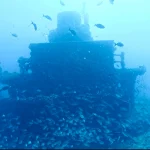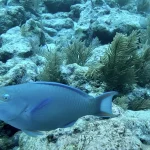Table of Contents
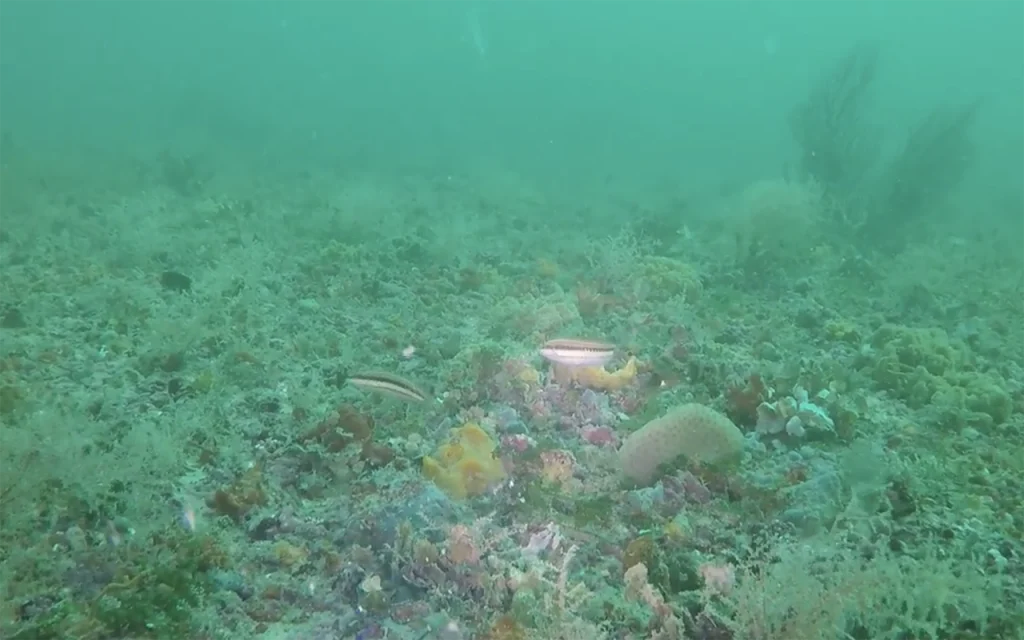
The Three Coal Barges are well-regarded as an accessible, interesting, and marine life-rich dive site, particularly suitable for less experienced divers or those looking to practice their skills.
Article at a Glance
- Location and Accessibility: The Three Coal Barges are situated approximately 5 miles southeast of Pensacola Pass, Florida, and can only be accessed by boat.
- Historical Background: Originally intended as an artificial reef, the barges were sunk in 1974 by U.S. Navy demolition experts after breaking free during transport.
- Diving Depth: The wrecks lie in shallow waters ranging from 45 to 60 feet, making them ideal for novice divers and snorkelers.
- Unique Configuration: The three barges are positioned end-to-end on the seafloor, creating a distinctive dive site surrounded by bridge rubble.
- Marine Ecosystem: The site has developed into a thriving habitat for various marine life, including resident sea turtles, making it a popular spot for underwater observation.
- Diving Activities: In addition to diving, the site is favored for shell collecting and serves as a training ground for new divers looking to hone their skills.
- Part of a Trail: The Three Coal Barges are included in the Florida Panhandle Shipwreck Trail, highlighting their significance as a recreational diving destination.
Shipwreck Location Coordinates and Depth
Depth
The barges rest in about 50 feet (15.3 meters) of water.
Location Coordinates
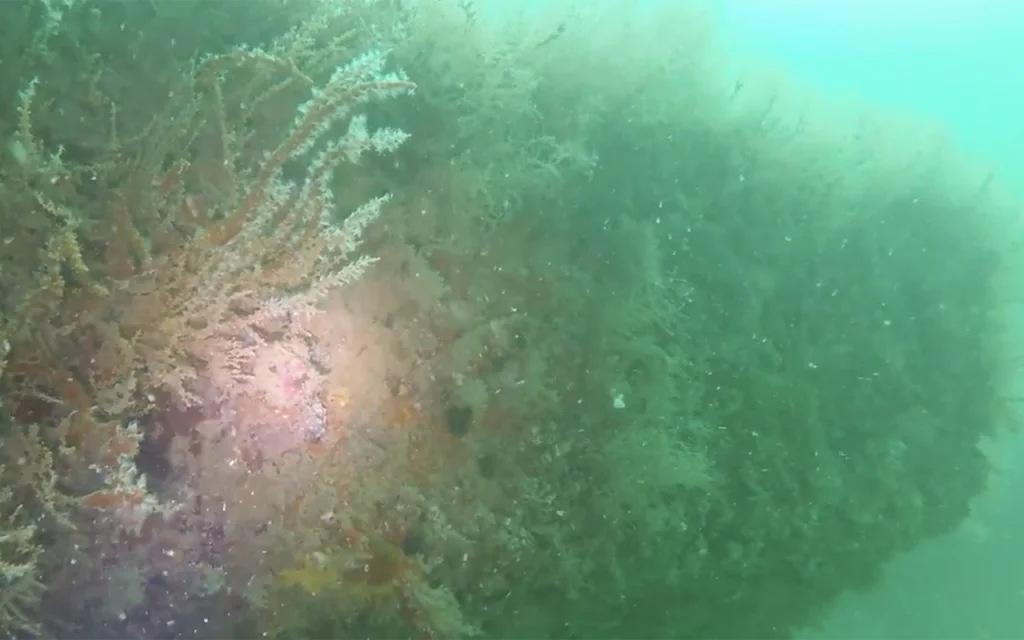
What Do Scuba Divers Say About This Ship
Diver Experiences
Popularity and Accessibility
The Three Coal Barges are a popular dive site, especially for novice divers. They are considered a great location for divers to practice their skills due to the relatively shallow depth of about 50 feet.
Marine Life and Attractions
Divers report that the site is home to an impressive array of marine life, including resident sea turtles. The wreck has created a rich undersea habitat for divers to explore and enjoy.
Site Features
The Three Coal Barges lie end to end amidst a field of bridge rubble, which adds to the diving experience. The site is also known as an area favorite for shell collecting.
Dive Conditions
The depth range is typically between 45-60 feet, making it suitable for various skill levels. The maximum depth is around 50 feet (15.2 meters).
Historical Interest
Divers appreciate the interesting history of the barges, which were sunk in an emergency operation by U.S. Navy demolition experts in 1974 after breaking free from their transport.
Dive Trail Significance
The Three Coal Barges are part of the Florida Panhandle Shipwreck Trail and are listed as #1 on this trail, adding to their appeal for divers collecting experiences along the trail.
What Kind of Marine Life Can Be Found on The Ship
Marine Life at Three Coal Barges
Diverse Ecosystem
The Three Coal Barges have created a rich undersea habitat that attracts a variety of marine life. This artificial reef structure provides shelter and a food source for many species.
Notable Residents
- Sea Turtles: The site is known to have resident sea turtles. These are likely to be either loggerhead or green sea turtles, which are common in the Gulf of Mexico.
Other Marine Life
While specific species aren’t mentioned in the search results, artificial reefs in this region typically attract:
- Various fish species
- Invertebrates like crabs and shrimp
- Coral and sponge growth on the structure
Shell Collecting
The site is noted as an area favorite for shell collecting, suggesting the presence of various mollusks in the vicinity.
Observation Opportunities
The relatively shallow depth of 50 feet makes this an excellent site for observing marine life, especially for novice divers. The clear waters of the Gulf of Mexico often provide good visibility for marine life spotting.
Key Information
| Attribute | Details |
|---|---|
| Location | Pensacola, Florida, USA |
| Distance from shore | Approximately 5 miles southeast of Pensacola Pass |
| Year of sinking | 1974 |
| Depth range | 45-60 feet (13.7-18.3 meters) |
| Maximum depth | 50 feet (15.2 meters) |
| Length of each barge | 140-200 feet (42.7-61 meters) |
| Beam (width) | 40 feet (12.2 meters) |
| Difficulty level | Beginner |
| Access | Boat only |
| Notable features | End-to-end configuration, surrounded by bridge rubble |
| Marine life | Diverse ecosystem, including resident sea turtles |
| Popular activities | Shell collecting, training new divers |
| GPS coordinates | 30° 17.450′ N, 087° 13.257′ W |
| Historical significance | Part of the Florida Panhandle Shipwreck Trail |
What Makes The Three Coal Barges a Unique Diving Experience
Accessibility and Suitability
- Shallow Depth: Located in less than 50 feet of water, making it ideal for divers of all skill levels.
- Novice-Friendly: The site is particularly well-suited for new divers to practice their skills.
- Snorkeling Potential: The shallow depth and end-to-end positioning of the barges make it a great spot for snorkeling as well.
Historical Interest
- Unique Sinking Story: In 1974, the barges broke free during transport and were intentionally sunk by U.S. Navy demolition experts to prevent them from becoming a navigational hazard.
- Artificial Reef Creation: The emergency sinking unintentionally created an artificial reef, enhancing the marine ecosystem.
Dive Site Features
- Layout: The three 200-foot barges lie end-to-end, creating an extensive area to explore.
- Surrounding Environment: The barges are surrounded by a field of bridge rubble, adding to the site’s complexity and interest.
Marine Life and Attractions
- Rich Biodiversity: The site has developed into a thriving undersea habitat, attracting a variety of marine life.
- Shell Collecting: It’s a popular spot for shell collecting, adding an extra dimension to the diving experience.
- Resident Sea Turtles: The site is known to be home to resident sea turtles, offering divers a chance to encounter these magnificent creatures.
Part of a Larger Trail
- Florida Panhandle Shipwreck Trail: The Three Coal Barges are listed as #1 on this trail, making them a key stop for divers exploring the region’s maritime history.
How Does The Three Coal Barges Compare to Other Shipwrecks in Florida
Accessibility and Depth
- Shallower Than Most: At 45-50 feet deep, the Three Coal Barges are significantly shallower than many other wrecks on the Florida Panhandle Shipwreck Trail, which often range from 70-130 feet deep.
- Novice-Friendly: This shallow depth makes it one of the most accessible wrecks for less experienced divers.
Size and Structure
- Unique Configuration: Three 140-foot long barges lying end-to-end create an extensive area to explore.
- Moderate Size: While substantial, they’re smaller than some of the larger wrecks like the USS Oriskany (911 feet) or the M/V Antares (387 feet).
Historical Significance
- Recent History: Sunk in 1974, the Three Coal Barges are relatively modern compared to historic wrecks like the 19th-century Brass Wreck.
- Intentional Sinking: Unlike many accidental shipwrecks, these barges were intentionally sunk, similar to some other artificial reefs in Florida.
Marine Life and Ecosystem
- Thriving Ecosystem: Like many Florida wrecks, the Three Coal Barges are “covered in life from top-to-bottom”.
- Shell Collecting: Noted as a great spot for shell and sand dollar collecting, which is not commonly mentioned for other wrecks.
Diving Experience
- Beginner-Friendly: While many Florida wrecks cater to advanced or technical divers, the Three Coal Barges are suitable for novices.
- Recreational Focus: Unlike some wrecks popular for spearfishing or technical diving, these barges are known for general recreational diving and marine life observation.
What is The Full History of The Three Coal Barges
Origin and Intended Purpose
The Three Coal Barges were originally intended to be an artificial reef. They were being transported to a designated offshore reef site in 1974.
The Incident
During transport in 1974, the Three Coal Barges broke free from their tow. This unexpected event led to an emergency situation, as the barges were at risk of becoming a navigational hazard.
Emergency Response
In response to this potential danger, the U.S. Navy took action:
- U.S. Navy demolition experts boarded the runaway barges.
- They detonated explosive charges on the barges.
- This action was taken to sink the barges before they could be driven ashore by rough seas.
Current Location
The barges sank at their present location, approximately 5 miles southeast of Pensacola Pass.
Configuration
- The three barges now lie end-to-end on the seafloor.
- They are surrounded by a field of bridge rubble, which has enhanced the reef-building process.
Depth and Dimensions
- The barges rest in about 50-60 feet of water.
- The top of the structure is at about 45 feet depth.
- Each barge is approximately 140-200 feet long and 40 feet wide.
Present Day
Today, the Three Coal Barges have become a popular dive site:
- They have created a rich undersea habitat for marine life.
- The site is known for shell collecting and training new divers.
- It’s home to an impressive array of marine life, including resident sea turtles.
- The barges are part of the Florida Panhandle Shipwreck Trail.
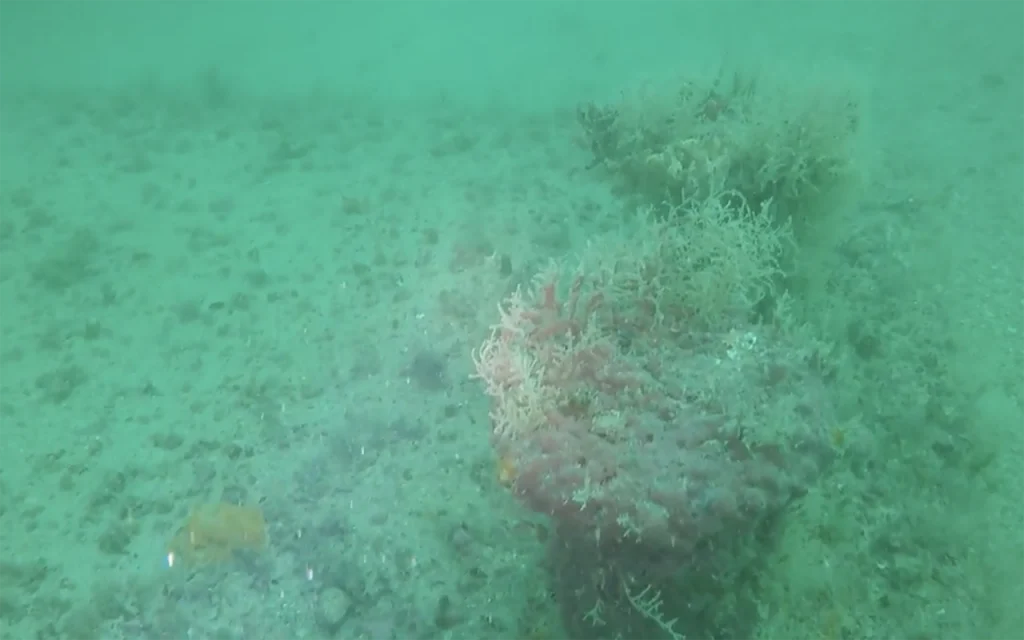
What Historical Features Can Still Be Identified on The Three Coal Barges Wreck
- Overall Structure: The three 140-foot long barges lie end-to-end on the seafloor, creating an extensive area to explore.
- Bridge Rubble: The barges are surrounded by a field of bridge rubble, which was likely added to enhance the reef-building process.
- Cargo Area: Remnants of the barges’ original purpose as coal carriers may still be visible in the cargo areas.
- Hull Fragments: While not explicitly mentioned, given the relatively recent sinking (1974) and shallow depth, portions of the barges’ hulls are likely still identifiable.
- Explosive Damage: Since U.S. Navy demolition experts used explosives to sink the barges, evidence of this controlled sinking might be visible in certain areas of the wreck.
- Deck Structures: Although deteriorated over time, some deck structures or remnants may still be identifiable.
- Towing Equipment: As these were towed barges, there may be remnants of towing equipment or attachment points visible.
What Safety Measures Are in Place for Divers Visiting the Three Coal Barges
- Depth: The Three Coal Barges lie in relatively shallow water, about 45-60 feet deep, which reduces risks associated with deep diving.
- Skill Level Recommendation: The site is described as suitable for divers to practice their skills, suggesting it’s appropriate for less experienced divers.
- Boat Access: The site requires boat access, implying that dive operators likely provide safety briefings and oversee dives.
- Visibility: While not explicitly stated for this site, underwater lights are often recommended for wreck diving to improve visibility.
- Bottom Conditions: Divers should be aware of potential silt on the bottom, which could reduce visibility if disturbed.
- Wreck Preservation: As with many dive sites, there’s likely guidance to avoid touching or penetrating the wreck to preserve it and for diver safety.
- Marine Life Awareness: The presence of sea turtles and other marine life suggests divers should be briefed on respectful wildlife interaction.
- Dive Planning: The site’s inclusion in the Florida Panhandle Shipwreck Trail implies that local dive operators are familiar with the site and can provide appropriate safety guidance.
Dive Shops That Provide Diving Trips to The Three Coal Barges
- Dive Pros
- Address: 7203 US-98, Pensacola, FL 32506
- Phone: (850) 456-8845
- Website: https://florida-divepros.com/
- MBT Divers
- Address: 3920 Barrancas Ave, Pensacola, FL 32507
- Phone: (850) 455-7702
- Website: http://www.mbtdivers.com/
- Emerald Ocean Dive Charters
- Address: 3009 Barrancas Ave, Pensacola, FL 32507
- Phone: (850) 512-8701
- Website: https://emeraldoceandivers.com/
North Florida Wrecks
- USS Oriskany
- USS Massachusetts
- SS Tarpon
- SS Gulf America
- Empire Mica
- USS Chippewa
- Avocet
- Black Bart
- The Vamar
- San Pablo
- USS Narcissus
- The Loftus Wreck
- The Dorothy Louise
- The Mizpah
- MV Janet
- The Eidsvag
- YDT-14 and YDT-15
- USS Strength
- Miss Louise
- The Lulu
- PC-1174
- Three Coal Barges
- USS Accokeek (ATA-181)
- El Dorado
- The Grey Ghost
- The Pete Tide II
- Red Sea Tug

